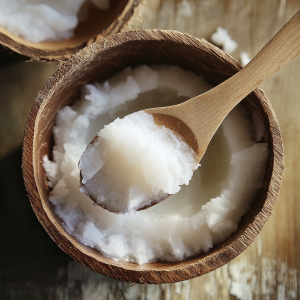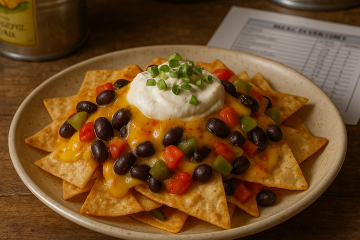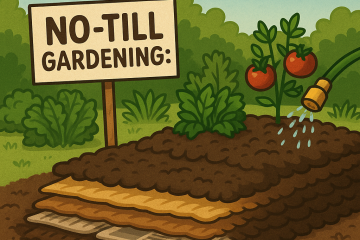
coconut oil has a great shelf-life and so many great and healthy uses.
Part 2 of 2
Here’s a helpful video I recently made that has additional information on some additional fats. https://www.youtube.com/watch?v=M4nLN-35bTo&t=26s
What oils and fats should you be including in your long-term pantry? How can you include quality oils affordably? How can you best store oils and fats? Which oils and fats are the healthiest and the most versatile in the kitchen?
Today we continue our exploration into this topic as Part 2 of yesterday’s article. I suppose I could have included it all in one article but I wanted to do some of my favorite fats/oils justice and not abbreviate or eliminate key information all for the sake of saving space.
LARD
Many mistakenly believe that lard is a heart attack waiting to happen. Well, if you purchase the main brands, you’d be right because they contain canola oil and other hydrogenated oils which are the culprits of heart disease. Otherwise though, you can render and preserve your own lard and so long as it’s kept sealed in a cool, dark environment, you’ll be able to rely on it being good for years and years. Here’s more information on rendering and preserving lard.
COCONUT OIL
We can’t have a discussion of shelf-stable oils and fats without bringing up one of my favorite solutions—coconut oil. As you know there are a variety of products made from each coconut. It’s water, meat, and husk are all viable products consumed worldwide, but ultimately it’s the oil in the coconut that has so many benefits. (Not surprising when you understand where medicinal quality essential oils come from) It’s a very stable fat and can withstand high heat so this means that it will also have a nice, long shelf-life. This fabulous oil used to be prevalent in the restaurant industry but alas, it didn’t have as good of a public relations agent as the canola oil industry. I have to shake my head in disbelief when I see restaurants proudly posting a sign that they don’t use any palm oils or coconut oils in their cooking. Geesh! What a deceptive web was crafted when canola oil businesses and government set out to portray coconut oil as the bad guy that it never was. Well, after years of these lies, coconut oil has been exonerated from its trumped up charges which falsely cast it into a life imprisonment. Nowadays, more and more nutritionists and medical experts are stepping up and wholeheartedly befriending coconut oil and other palm oils as a very healthy solution for their fat needs for cooking, baking, and nutritional intake. Unfortunately, since it isn’t underwritten by the USDA or subsidized by the U.S. and Canadian government like canola oil is, it’s found to be rather expensive in comparison. I have read several times that one of the ways to judge a good coconut oil is by price—“the more expensive it is, the better”. Nonsense! What’s to prevent a company from simply charging more for their product just to give it the air of being a better quality? Such half-logic might work for politicians, but it’s nonsense to me. You can get good quality coconut oil without paying an arm and a leg—though I will say that I’ve found the really cheap coconut oils to be downright nasty tasting. The good news though is that Costco recently began carrying coconut oil making it significantly more affordable than other similar quality brands. On average, a 16 ounce jar of coconut oil runs about $15, whereas the gallon of coconut oil at Costco is twenty-something dollars—a much better buy. And remember, Costco has a satisfaction guarantee on all of their products for one year; so if you purchase it and don’t love it, no harm, no foul, you get your money back.
Regardless of all of this, I’m confident that once you get the facts on coconut oil, free from the influence of a multi-billion dollar marketing campaign, I suspect that you’ll see that the myriad of benefits far outweighs the cost difference. To this end, I highly recommend the book written by Dr. Bruce Fife called “The Coconut Oil Miracle”. He’s very passionate about decriminalizing coconut oil to the point that he founded a Coconut Research Center where you can get more information. http://www.coconutresearchcenter.org/index.htm (No, I can’t say that with a straight face. It just sounds funny, like it’s saving the coconuts from extinction or abuse.)
Obviously, any great product has its not-so-great imitations. So let’s be sure that you select the right coconut oil for your preferences.
First of all, stay away from any coconut oil that’s labeled as RBD. It should be expected by now that if a food manufacturer has to use initials to describe something, it’s probably not good. RBD means refined, bleached, and deodorized. Yum. Doesn’t that sound appetizing and health? I’ve heard from some readers saying that they can’t stand coconut oil because it makes everything taste like coconut. But the reality is, when you have a coconut oil that has a mild, fresh, coconut flavor and aroma, it’s actually a good thing because it means you’re not using a highly refined, aka RBD, coconut oil. While there will be some noticeable aroma and taste of coconut, it should be VERY mild and most certainly taste “fresh”. This will be achieved if a cold-press extraction is used and young coconuts are the resource. Some companies use old, sun-dried or smoked coconuts for their oil. If you taste “roasted coconut” or smoky flavors, this is not the coconut oil you want—at least not if you want the inherent health benefits of the coconut oil. I guarantee you will not like the aesthetic or taste results under those circumstances. Also, you should know that unacceptable extraction processes will actually enhance the coconut smell and taste. That’s not what you want because that product will turn rancid sooner, rather than later due to the extreme heat. Next, you want virgin coconut oil. While virgin is a somewhat relative term and used loosely in the coconut oil industry, I’ve not found a single coconut oil product that was good that DIDN’T have the “virgin” labeling.
Believe it or not, for some manufacturers of coconut oil, mold is considered an acceptable component as they claim that it’s harmless because the heat was suitably high to render it harmless and should just be scraped off. Do I really have to say how ludicrous such a position is? Next…
Unfortunately I’ve discovered that not all labels disclose RBD. So I’d be sure to double check on how the manufacturer refines its product before investing in it. When the coconut oil is solid (as it should be at room temperature) it should be a nice, bright, white color. (The practice of bleaching is only necessary as a result of using high temperatures and smoking. So in order to restore the coconut oil to its proper color, a bleaching process is used.) When it melts it should be clear, completely clear, not opaque and void of any particles. A refined coconut oil extraction includes the use of chemicals, heat, smoking, and other solvents to refine the oil which results in a somewhat tasteless and odorless oil while also extracting key health benefits. Not all oils are equally as refined as others but if its refined, it definitely depleted it’s health benefits and thus its shelf-life. You also want to avoid any coconut oils that have been hydrogenated or even partially hydrogenated or that contain any hydrogenated ingredients. Such brands will have a useless shelf-life and be void of any of the health benefits—so you might as well spend less money on shortening instead. (Sometimes coconut oil manufacturers will cut in the inexpensive canola oil to create more volume—isn’t that nice? Not.)
Ultimately, you want a “virgin”, cold-pressed coconut oil. Virgin, in this case meaning that it was extracted using a minimal amount of contact with the oil. Most manufacturer’s will put out a virgin coconut oil under one label, and then go back and use heat and solvents to extract the remaining coconut oil that’s leftover and sell it under another label. I’d suggest avoiding the cost of purchasing organic coconut oil as coconuts aren’t subjected to the same chemical torture as our other produce and protein products are.
O.K. Now you’re a pro when it comes to coconut oil. See additional details on the benefits of coconut oil and its multi-purpose applications here:
Soy Lecithin
I’m not a big fan of soy, period, but I do stock up on soy lecithin oil because I use it to make breads instead of vegetable oils. It will easily store for 10-20 years in a cool, dry place, and 6 containers of it will provide me with enough oil to make 4 loaves a week, for a year, for less than $50. I like to purchase it in the squeeze bottles since it’s so thick and sticky, that way I just squeeze it out directly into my bread dough. The only other oils or fats that I have on hand are peanut oil, safflower oil, and of course my soy lecithin oil. Lecithin provides one of the missing amino acids that wheat doesn’t have (linoleic acid) and it’s found in all living organisms. It’s a lipid/fat that also contains choline, phosphorus and inositol, a part of the vitamin B complex.
OTHER OILS
The only other traditional oils that I keep on hand are peanut oil and some safflower oil so that I handle anything else that these other fat resources can’t. Peanut oil has a high smoke point and a great nutritional profile as it also contains mono-unsaturated fats, oleic acid, and antioxidants which is part of the reason that I find it endures a longer shelf-life than its many counterparts—and also it’s probably why I don’t mind using it to deep-fry my turkey with it at Thanksgiving! Yum!
A lot of folks confuse safflower oil as sunflower oil. While it is extracted from seeds, it’s a much lighter flavor. It also lasts on the cool, dark shelf longer than its liquid oil counterparts AND has been the subject of many studies over the last 10 years as it relates to battling high-cholesterol and heart disease. You can cold-pack both the safflower oil and the peanut oil in jars if you’d like to be that much more certain of their shelf-life—as they typically come in plastic bottles, BUT, even with the plastic bottles I’ve not had a problem with my peanut and safflower oils lasting 5 years so long as I keep them in a cool, dark environment.
NATURALLY OCCURING FATS AND OILS
Contrary to what the USDA and Extension Services suggest nowadays, I DON’T trim the fat off of my meat products when I can them and I wholeheartedly embrace canning delicious broths without skimming the fat. Believe it or not there are actually highly respected experts in the medical and nutrition industries that haven’t fallen for the multi-billion dollar hype of drug manufacturer—claiming that fat causes heart disease. In fact, if you cut through all of the money motivations that influence what’s now taught as “the gospel truth” at our medical schools you’d find a very rational, logical source of facts which encourages consumers to partake of an unlimited amount of non-hydrogenated fats. These fats are necessary to ward off dementia, Alzheimer’s, heart disease, cholesterol, osteoporosis, obesity, diabetes, and a host of other illnesses which so heavily plague our society. As such, each of us should conscientiously ensure that our pantry takes into consideration these healthy fats that we need. And besides, the flavor created by these fats, as opposed to “fat free” is so much more enjoyable. Calories aren’t the enemy today but they certainly won’t be the enemy if we ever have to perform 100 times more manual labor in a crisis scenario some time in the future.
Storing proper fats and oils isn’t just about having the right item to cook and bake with; it’s also a matter of vital nutrition that we need to take seriously if we want our bodies to operate properly. Long before these self-appointed experts of food preservation came along, loving mothers who wanted to provide what’s best for their family canned high fat content products at the encouragement, in fact, of the jar manufacturers, esteemed chefs, home economics instructors, and other experts.
All that being said, there are a couple of cautions that I need to highlight when it comes to preserving these types of products. If you have any fat remaining on the rim of the jars then you run the risk of them not sealing properly, so be sure that you are careful when filling the jars and that you are thorough when cleaning off the rims. I find a very hot washcloth works well or you can dip a paper towel in some vinegar. Also, you must provide a full inch of headroom when canning any product with fat. During the canning process, the air needs to expel from the jars. If the jars are too full, then air and some of the liquid contents will expel, which runs the risk of leaving a residue of fat on the rims. This can completely compromise the seal by preventing the jars to seal at or worse, in my opinion, gradually loosen the seal. This is why I typically watch my beautiful home-canned goods for a couple of weeks before putting them in my long-term pantry. I want to make sure the seal is fixed and doesn’t loosen later. There’s not much more discouraging than to do all of the work of canning only to be confronted with mold or the horrific smell of chicken broth gone bad. But so long as you exercise these two bits of caution of having the proper headspace and thoroughly wipe off the rims before you put the lids on, you should be able to safely avoid these problems.
In summary, ensuring you have the proper fats and oils will make or break the success of any kitchen, but don’t stress about it. I’ve provided you with some clear cut guidelines here that I believe actually give me a lot of leeway regardless of a person’s dietary health concerns or palate preferences. Also, don’t fuss and go overboard on storing these items properly. Just remember COOL, DRY (humidity can corrode or rust your lids), and DARK. Under a bed, at the back of a closet, in the basement, or in kitchen cupboards stored away from heat sources will be fine.
Inevitably there will be some of you I may have put in a bit of a predicament by this article—who own some of the oils that I’ve advised against—but don’t worry. You don’t have to throw them out or serve them to your family with a guilty conscience. You can use those oils as fuel for your oil lamps and chances are, though what you have on hand may not be ideal, it was probably much less expensive than what you can get lantern oil nowadays. It will burn “dirtier” than the highly refined lamp oil, but it will still work nonetheless.
Join us on Facebook at www.facebook.com/preparednesspro


